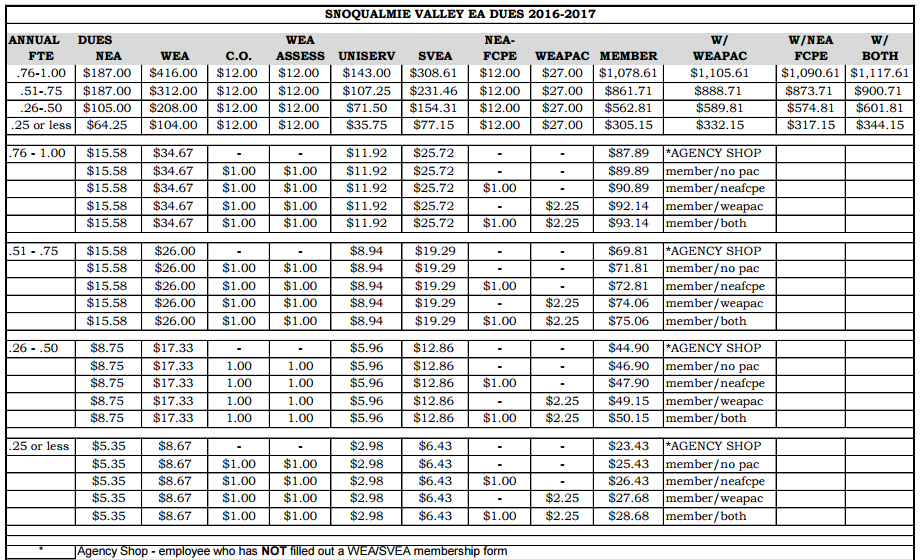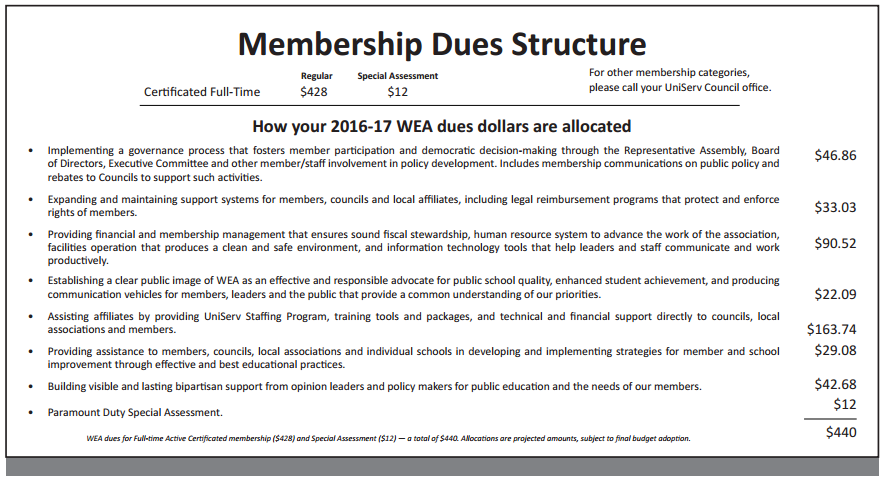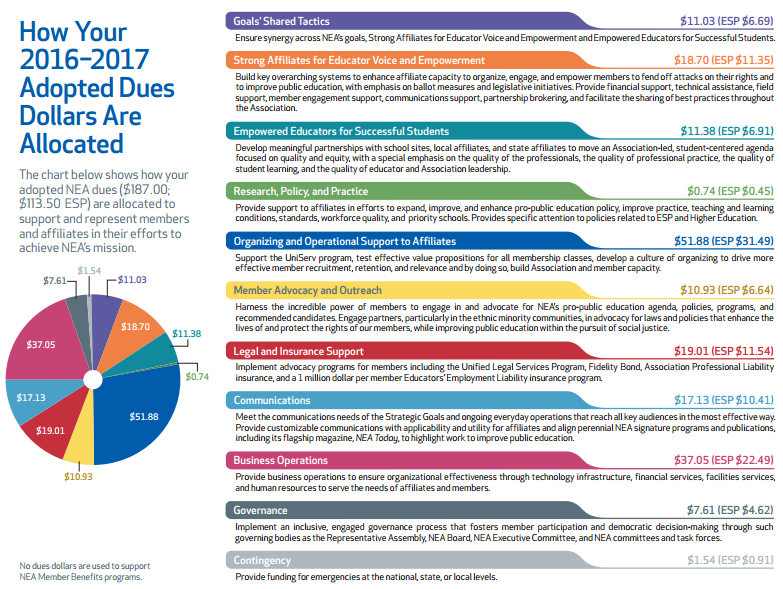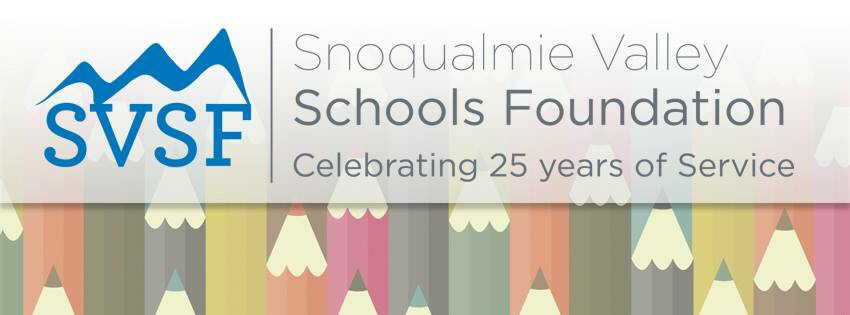Why do I pay dues?
SVEA protects the rights of our members, advocates on their behalf, assists them in resolving conflicts, answers their questions, offers suggestions, and listens to their concerns. It is SVEA's responsibility to negotiate with the school district on behalf of our members over wages, hours, and working conditions. In addition, we offer professional development and training opportunities to our members in a variety of subject areas throughout the school year.
Luckily, the members of the Snoqualmie Valley Education Association do not stand alone. Our Association cooperates closely with the Sammamish UniServ Council, Washington Education Association, and National Education Association
How much are my dues?
How are my dues spent?
Regular membership dues and special assessments do not support political candidates' campaigns. Only optional WEA-PAC and NEA-FCPE dues go to support political candidates' campaigns.
Here is the 2016-17 WEA membership dues structure:















 RSS Feed
RSS Feed